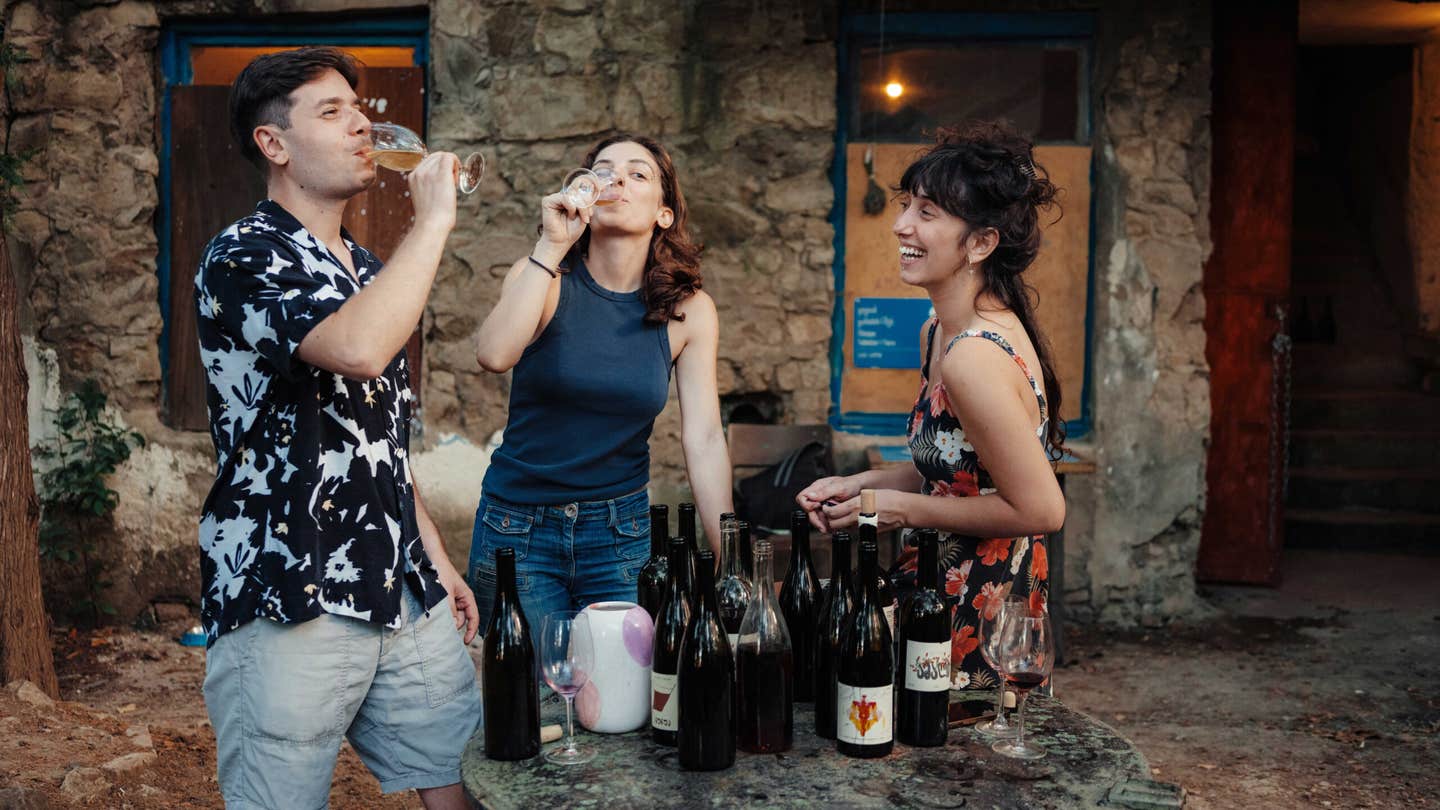
The Taste of Survival
It was the summer of 1932—the height of the Great Depression—and hot, fierce winds blew across the western prairies of Canada. Barely 8 years old, I struggled with a pail of water twice my size, carrying it the half mile from the well to our hilltop home in southern Saskatchewan. When I finally reached the barn where my mother was feeding vegetable leaves to two aged sheep, I collapsed at her side, exhausted and near tears. ''Why can't I bring the sheep to the water?'' I cried. But she only smiled at my tantrum. ''It's very important that we don't tire these animals at all,' she said. ''They must be heavy with fat when we butcher them for qawarma in the autumn.'
Qawarma—the meat of force-fed sheep or cattle, cooked and preserved in the animals' own fat—was just one of the Arabic food traditions that my parents, Giriyas and Shams Salloum, had brought with them to Saskatchewan from what was then the French mandate of Syria and Lebanon. Like many of their neighbors in the village of Qaroun in the Bekaa Valley (now part of Lebanon), they chose an uncertain future in North America over the desperate economic conditions in their homeland. In 1923, my father left his pregnant wife and my older brother, Adib (Eddie), for the three-month journey by ship and train to the port of Quebec City. I was born after he left, and my mother, brother, and I joined him a year later. In 1927, our family applied to the Canadian government for a homestead and was granted a quarter section of land (160 acres) 18 miles north of the tiny town of Val Marie, near the Montana border.
My mother gave birth to four daughters and another son during our years on the homestead, but no sooner had we plowed our land than drought turned the region to desert. Survival became precarious. Most of our fellow homesteaders, after struggling to grow carrots and potatoes in the dry soil, gave up their farms and moved to the cities. We hung on, and our garden of chickpeas and lentils—legumes native to the hot, dry climate of Syria and therefore suitable to the prairie—thrived. By following the old ways, we never went hungry—and even stayed healthy. We survived by relying on foods that, while virtually unknown in North America, had existed for centuries in the peasant communities of my parents' homeland, where farming had always been hard. We had our qawarma, for instance—and we had a source of calcium year-round, even without fresh milk. When we did have cows (bought with money my father earned peddling housewares), we made large quantities of yogurt. And from our meager wheat crop, we had something more versatile than just flour for bread: We had burghul—a crucial ingredient in our soups, stews, salads, and more.
Burghul has been called the noblest food derived from wheat. As children, however, we couldn't bear the mention of it. We were expected to participate in every phase of the production of our yearly supply—nearly two hundred pounds' worth—of this cracked wheat. I especially loathed those hot July days when I had to scour the bare prairie for odd pieces of wood to burn in our makeshift outdoor hearth. Making burghul was a complicated process. First the wheat was washed and placed in a cauldron—an old tin oil drum my father had cut in half. Then it was covered with water—requiring me to make more dreaded trips to the well—and cooked for one to two hours until the wheat softened and burst. Then we'd spread it out on white sheets under the blazing sun. In two days, the kernels would turn bone-dry. These were dunked into water again, and then put through a grain grinder—the same machine we used to chop grain for the animals, which we washed and sterilized—to loosen the bran. It was my mother's job to winnow the crushed, cooked wheat. Finally, the wheat was again spread out on the sheets until all the moisture had evaporated. When these many steps were at last finished, we had made enough burghul to last all year. (My brother Albert and his wife, Madeleine, continued to make burghul this way for many years.)
Another staple of our diet was what the ancients in the Middle East called the milk of eternal life: yogurt. Yogurt was our miracle food, not only a panacea for stomach ailments (there were no doctors for miles on our wild prairie), but also the base for desserts, drinks, sauces, and kishk—a tangy, powdery, cheeselike substance that is one of the oldest preserved foodstuffs known to man. When we made yogurt, we tied a portion of it in bags to drain. The solidified mass that was left (called laban in Arabic) was then mixed with burghul and rolled into walnut-size balls, which we left to dry in the sun for two weeks. These balls were ground and sifted to make kishk.
High in protein and very filling, kishk was my mother's ready replacement for meat and vegetables when they were absent. She used it, too, to enhance our daily chickpea and lentil dishes. Though they were new to western Canada, both legumes had been on the Middle Eastern housewife's menu for thousands of years. My mother prepared chickpeas in endless ways, roasting the still-green mature pods, then shelling the legumes as appetizers or cooking them raw, like green peas. More often, she'd use dried chickpeas or lentils instead of, or in addition to, meat in soups, stews, and stuffings. Of course, I always thought I was being made to eat inferior foods, and I longed for the bologna sandwiches other children brought in their school lunches.
Although visitors to our farm were few, when they did come, they always remarked on the strange and pungent herbs growing in my mother's garden. ''Why are you growing these smelly weeds?'' asked our neighbor's wife, stopping in a patch of mint. As my mother explained how we used mint almost every day—fresh in season and dried the rest of the year—I, a lad of perhaps ten, could not believe that our neighbor did not know this fragrant herb that I loved. In Saskatchewan, my mother used mint leaves as she had in Qaroun, to season everything from jellies to soups, and to add flavor to yogurt and stuffed vegetable dishes.
But of all the greens we ate, dandelion leaves—which we called silq (an all-purpose Arabic word for most wild greens) and which we gathered in the wild—were my mother's favorite. To me, helping pick them was only another boring task, but I had no choice. ''Come! Get a pail and let's go!'' my mother would cry as she pulled on her boots. ''The silq are at their prime today!'' The ground would usually be soggy but fresh-smelling after the night's rain. As we made our way up a hill, I'd trail behind, asking myself why we were picking weeds that our neighbor's children had assured me were poisonous—even for animals! What none of us knew then, of course, was how much those wild greens had to do with our good health.
For me, life on the homestead was never pleasant—but I find myself drawn, as an urban adult, to the foods of my childhood. My parents moved to the city when I was about eighteen and my mother stopped making these dishes so often—which, it turned out, she considered to be peasant food. But I finally recognize the value of what we used to eat, and I have passed these ancient Syrian traditions along to my children. I make qawarma. With beef from the butcher.
Keep Reading
Continue to Next Story










